How Irrevocable Trusts Work
There are many ways to conceptualize how irrevocable trusts work. I'm going to explain two, and I’m going to call them the Bucket Model and the Sticks Model.
The Bucket Model
Think of a trust as a bucket. A really big bucket.
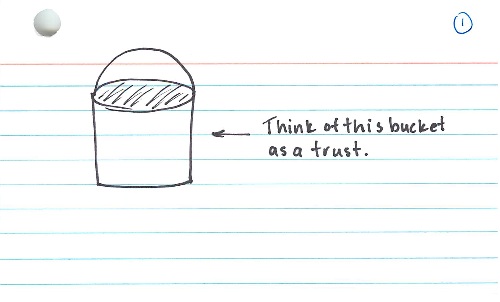
So you have this bucket/trust. You put things, like your house (and most of the stuff in your house), your condo at the beach, and your other possessions into it.
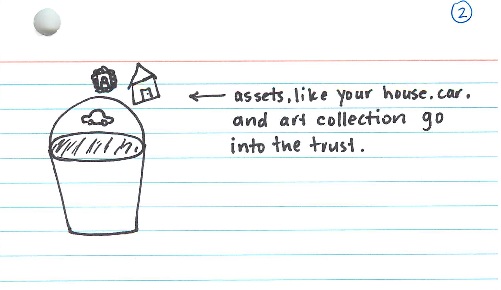
Then you hand the whole bucket to someone else--your trustee--to hold and watch over. Or maybe you hold onto the bucket yourself (i.e., you make yourself the trustee).

Now, this bucket isn't an ordinary bucket: it's a leaky bucket. Maybe it's just a little drip, maybe it's a trickle, or maybe it's a steady stream. Regardless, this bucket leaks out its contents (money or assets) in a controlled way to people you name--your beneficiaries.
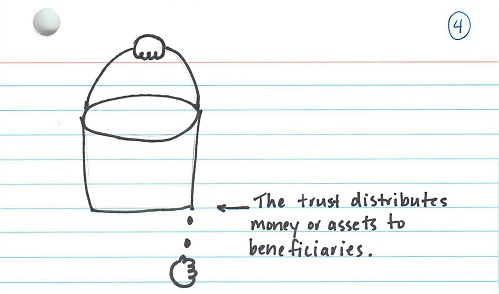
Now, the bucket model isn't 100% accurate. It makes a trust seem more like an independent entity (like a corporation or LLC), than it really is. This is where the Sticks Model comes in.
The Sticks Model
When you think about it, ownership of a piece of property is really a set of rights to do things with that property. Let's say you own a house. That means you have the rights to live in the house, sell it, rent it out, enjoy the money you get from selling or renting, mortgage it, and do a variety of other things. Imagine each of your rights is represented by a stick.
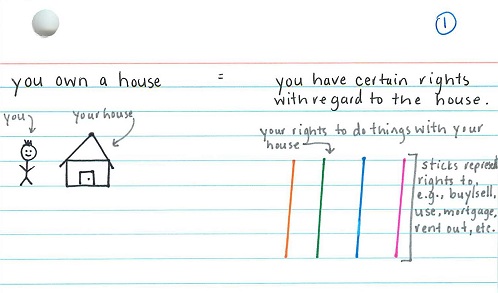
All those rights (the sticks) you have as owner of the house fall into 2 basic categories: legal rights (rights to do things with the property) and beneficial rights (rights to enjoy the benefits of the property or proceeds if the property is sold).
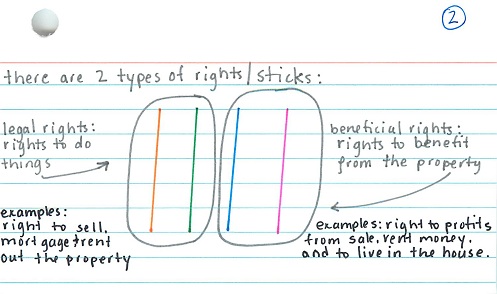
Creating a trust is essentially giving the different types of rights to different people. The legal rights go to a trustee, and the beneficial rights go to the beneficiaries.
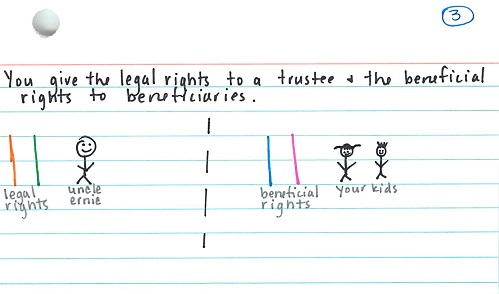
Conclusion
Both of these models are useful ways to conceptualize trusts. But keep in mind that these are just analogies. A real trust can do much more than a dripping bucket.
